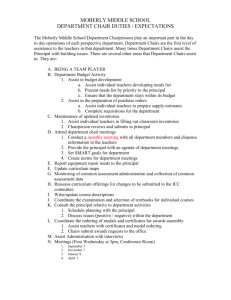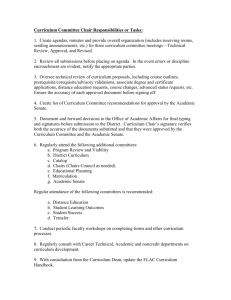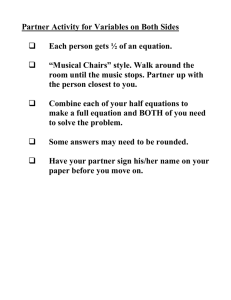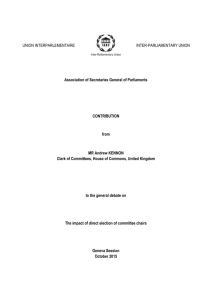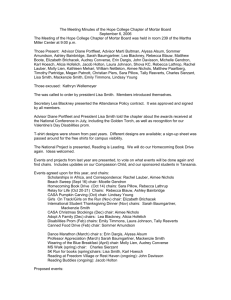Congressional Committee Chairs Overview
advertisement
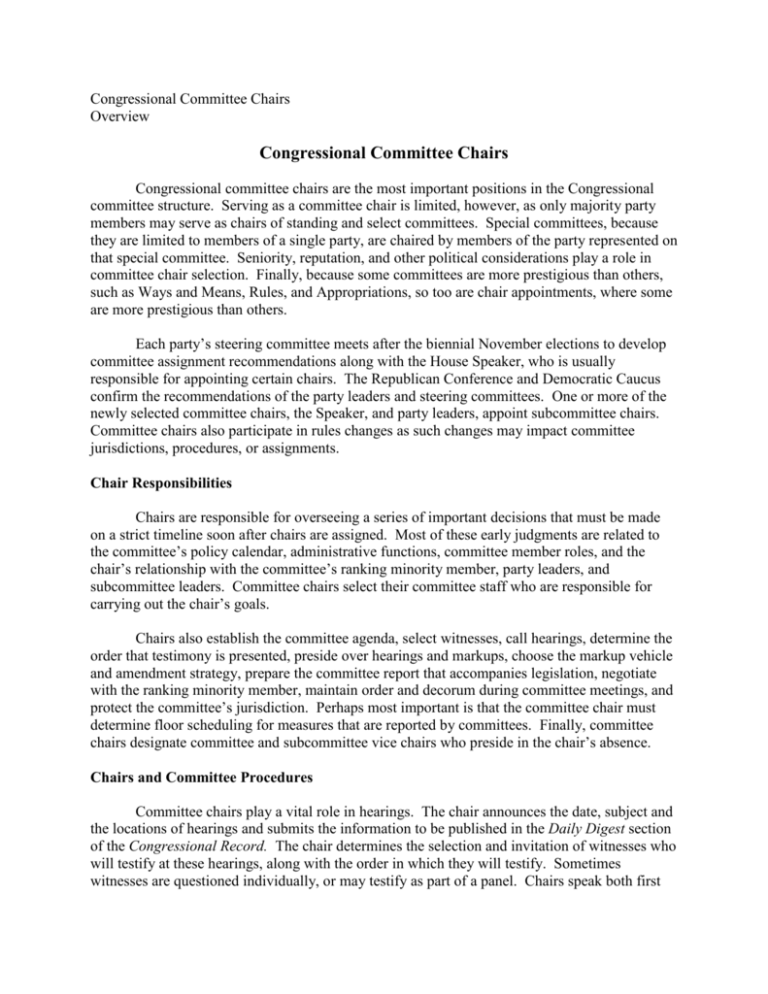
Congressional Committee Chairs Overview Congressional Committee Chairs Congressional committee chairs are the most important positions in the Congressional committee structure. Serving as a committee chair is limited, however, as only majority party members may serve as chairs of standing and select committees. Special committees, because they are limited to members of a single party, are chaired by members of the party represented on that special committee. Seniority, reputation, and other political considerations play a role in committee chair selection. Finally, because some committees are more prestigious than others, such as Ways and Means, Rules, and Appropriations, so too are chair appointments, where some are more prestigious than others. Each party’s steering committee meets after the biennial November elections to develop committee assignment recommendations along with the House Speaker, who is usually responsible for appointing certain chairs. The Republican Conference and Democratic Caucus confirm the recommendations of the party leaders and steering committees. One or more of the newly selected committee chairs, the Speaker, and party leaders, appoint subcommittee chairs. Committee chairs also participate in rules changes as such changes may impact committee jurisdictions, procedures, or assignments. Chair Responsibilities Chairs are responsible for overseeing a series of important decisions that must be made on a strict timeline soon after chairs are assigned. Most of these early judgments are related to the committee’s policy calendar, administrative functions, committee member roles, and the chair’s relationship with the committee’s ranking minority member, party leaders, and subcommittee leaders. Committee chairs select their committee staff who are responsible for carrying out the chair’s goals. Chairs also establish the committee agenda, select witnesses, call hearings, determine the order that testimony is presented, preside over hearings and markups, choose the markup vehicle and amendment strategy, prepare the committee report that accompanies legislation, negotiate with the ranking minority member, maintain order and decorum during committee meetings, and protect the committee’s jurisdiction. Perhaps most important is that the committee chair must determine floor scheduling for measures that are reported by committees. Finally, committee chairs designate committee and subcommittee vice chairs who preside in the chair’s absence. Chairs and Committee Procedures Committee chairs play a vital role in hearings. The chair announces the date, subject and the locations of hearings and submits the information to be published in the Daily Digest section of the Congressional Record. The chair determines the selection and invitation of witnesses who will testify at these hearings, along with the order in which they will testify. Sometimes witnesses are questioned individually, or may testify as part of a panel. Chairs speak both first and last at these hearings to introduce the purpose and tone and conclude by formally thanking the witnesses for their contributions. In addition to the chair, the minority party may call its own witnesses. Committee chairs also schedule, conduct and select markups, which are legislative sessions for amending or changing bills or resolutions. Before markup, chairs will frequently caucus with committee members in their party to determine tactics. During markup, committee chairs serve as the chief advocates for or against amendments advanced to the markup stage. At the conclusion of markup, committee chairs are responsible for reporting any measures and taking the necessary steps to assure consideration of those measures by the chamber. Finally, committee chairs prepare materials to accompany reported legislation, including all other materials and documents on other committee activities. The House also requires all committees to adopt committee rules that must be published in the Congressional Record no later than 30 days after the committee is initially elected. At this time, the chair notes any changes in the rules from a previous Congress, and proposes the number of subcommittees from within the committee. All proposed rules must be approved by the committee itself.
